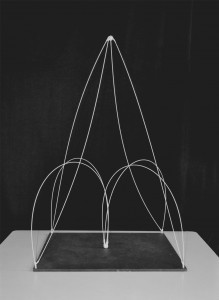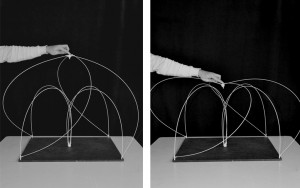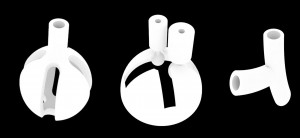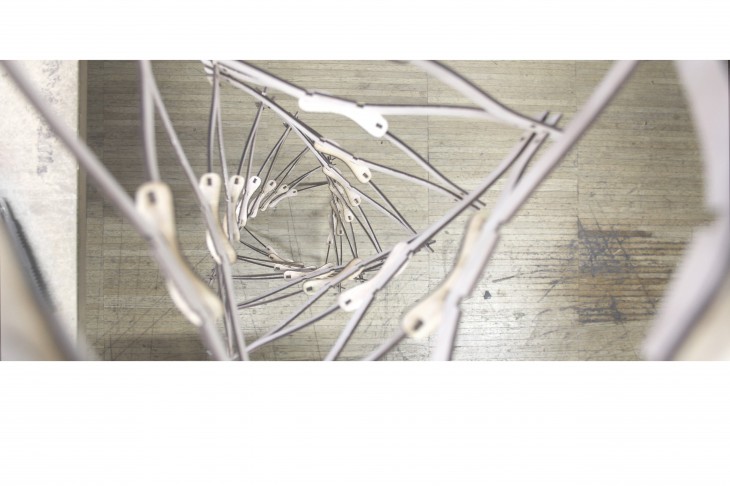The design of our tower was driven by several criteria: || maximization of material usage
|| repetition of a single member
|| achieving of several possible configurations
As a result of a successful implementation of the first and the second criteria, we were able to make use of 97% of the available material, consequently reaching the height of nearly 5 meters in the virtual model simulation. Nevertheless, the height of the virtual model was modeled in the “perfect world” conditions, thus not reflecting such important physical criteria as material stress capabilities and the vertical load distribution in a structure of this type. Having assembled several sections of the tower into their envisioned arrangement, we confirmed that such material as wood fails in direct correlation with the grain its cut along and the amount of stress it experiences in the thinnest joinery areas. We realized that in order to reduce the stress||strain loads in our tower we need to drastically reduce the total height of the structure and hence tackle the third design criteria, multiple configurations using a repetitive single element.
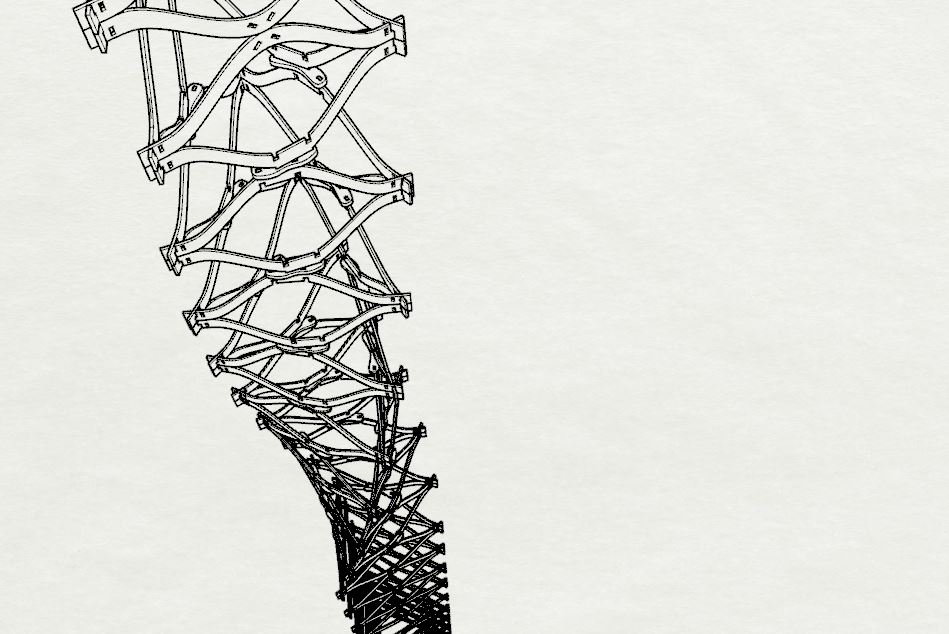
Read More »




